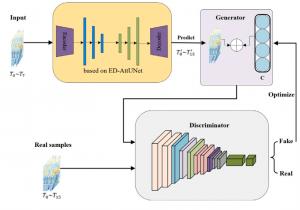GAN-based Solar Radiation Forecast Optimization for Satellite Communication Networks
GA, UNITED STATES, October 23, 2025 /EINPresswire.com/ -- This paper proposes GAN-Solar, a novel quality optimization model for short-term solar radiation forecasting. Based on Generative Adversarial Networks (GANs), the model addresses spatial texture degradation and intensity distortion in predictions, significantly improving forecast quality and reliability for high-precision applications.
As a clean, renewable resource, solar energy plays a central role in the global energy transition. However, the intermittent nature of solar radiation, affected by dynamic atmospheric conditions like cloud cover, poses a barrier to the stable operation and dispatch of photovoltaic (PV) power generation systems. Accurate short-term solar forecasting is key to solving this, but existing technologies often produce blurry and distorted results as the forecast horizon extends.
To address this technical bottleneck, a research team from several institutions including the Nanjing University of Information Science and Technology has developed a novel AI optimization model called GAN-Solar.
“The model applies the principle of Generative Adversarial Networks (GANs). You can think of it as a competition between two experts: a "master painter" (the generator) and a "keen art critic" (the discriminator),” explains Chao Chen, lead author of the study(doi:https://doi.org/10.1016/j.ijin.2025.07.004) published in the International Journal of Intelligent Networks.
The "painter's" job is to generate the most realistic future solar radiation map based on historical data. The "critic," meanwhile, works to distinguish between real satellite images and the "paintings" created by the generator.
“Through this continuous adversarial training, the "painter's" skills are constantly honed, ultimately enabling it to produce high-definition, accurate forecasts that are nearly indistinguishable from reality,” adds Chen. “Traditional models 'see' less clearly over longer prediction times. GAN-Solar is like equipping the forecast system with a pair of high-precision glasses. It not only sees the overall radiation distribution but also captures the crucial details, thereby enhancing the operational efficiency and stability of solar power systems, allowing predictions to significantly reduce 'blurriness'."
Experimental results show that GAN-Solar achieved significant improvements on key metrics compared to existing advanced models, with the Structural Similarity Index (SSIM) of predicted images increasing from 0.84 to 0.87. “This provides more reliable technical support for solar power systems, enhancing their operational efficiency and stability, ensuring the forecasts can meet the demands of high-precision applications,” says Chen.
DOI
10.1016/j.ijin.2025.07.004
Original Source URL
https://doi.org/10.1016/j.ijin.2025.07.004
Funding information
This work was supported in part by the National Natural Science Foundation of China under Grant 62372242 and Grant 92267104, the Jiangsu Provincial Major Project on Basic Research of Cutting-edge and Leading Technologies under Grant no. BK20232032.
Lucy Wang
BioDesign Research
email us here
Legal Disclaimer:
EIN Presswire provides this news content "as is" without warranty of any kind. We do not accept any responsibility or liability for the accuracy, content, images, videos, licenses, completeness, legality, or reliability of the information contained in this article. If you have any complaints or copyright issues related to this article, kindly contact the author above.

